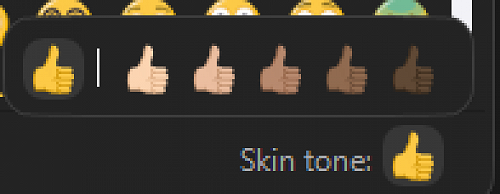
Zoom: Meeting Reactions and Polling How-to
During the Covid-19 pandemic conditions, most of us have participated in many Zoom meetings, to the extent that our society has recognised a new stress condition: Zoom fatigue. Video-conference systems have limitations in transmitting the subtler nuances of non-verbal communication. This contributes to cognitive dissonance and conflicted, exhausting feelings. The issue has been long recognised in the technology community and the major system providers were quick to introduce features to at least partially mitigate these issues. This article will walk through these features from a participant’s viewpoint, using Zoom Meetings as an example.
Meeting Reactions
At a basic conversational level, the issue of poor non-verbal communication originally came to the fore when mobile telephones with txt capability were introduced. The “technological” response was to introduce emoji’s or emoticons. In Zoom, emojis are offered as part of what Zoom call Reactions. Although it is easy to dismiss emojis as toys for the young ones, used well they offer an important communication aid and can turn a deadly insult into a friendly comment (and vice versa – so need to be used thoughtfully).
Using Emojis
To find Emojis, click on the Reactions Button on the centre part of the main Zoom toolbar. This toolbar automatically hides when not in use, so to find it, move the mouse to the bottom or tap the screen to make it appear. Don’t worry if your system is not quite the same as the picture below – Zoom has lots of options and settings for the Host and Account Owner that can change what appears here. Actually, Meeting Reactions (Emojis) and Nonverbal feedback can be turned off in settings as well, but are usually on by default.
Once you click on the Reactions Button, you should see a panel;
The top row is the Emoji’s Zoom considers to be most commonly used in meetings – Clap, Thumbs up, Joy, Open mouth, Heart and TaDa. If you feel unduly constrained by these six options, click on the More button – the 3 dots at the right of the row.
When you press an emoji, it is displayed in the corner of your gallery box and is visible to everyone in the meeting for 10-seconds and is then automatically turned off. The Skin Tone button (available on desktop clients only) at the bottom of the emoji panel allows you to change the skin colour of your emojis – some people feel that Simpson Yellow is not a normal skin tone.
Nonverbal FeedbackThe second row of buttons in the Reactions panel, plus the Raise Hand button are specifically designed to provide feedback to the Meeting Host and/or speaker. The buttons are Yes, No, Slow down, Speed up, and the recently added I’m away coffee cup (again, desktop only). While the names of the buttons imply certain messages, some meeting organisers may choose to use these signals for custom purposes. The onus is on them to explain that to the meeting.
These signals display in your gallery display view the same way as the Emojis, except, unlike the Emojis, these hints do not clear after 10-seconds – they stay in place until they are manually cleared. You can clear your own signals but additionally, the Host is provided with tools to Clear all feedback and can also access a summary of how many participants have selected each feedback item.
PollsFinally, Zoom allows a basic polling facility. This would be used where the number of participants gets so large that scrolling through the list of participants is too clumsy and/or time-consuming, or where there is a legal or best-practice requirement to record the results of the poll. The results of polls can also be shared back to the participants for transparency. Additionally, more complex, multi-question polls can be set up to act as quizzes, ice-breakers or assessment tools for the education sector.Polls are very easy for the participant. When the Host launches a poll, the poll will appear over the top of your Zoom screen. It will remain active for a time determined by the host and during this time, you can complete the poll and Submit it back to the host. When the poll is completed, the Host can share the results with the meeting.
Gallery







